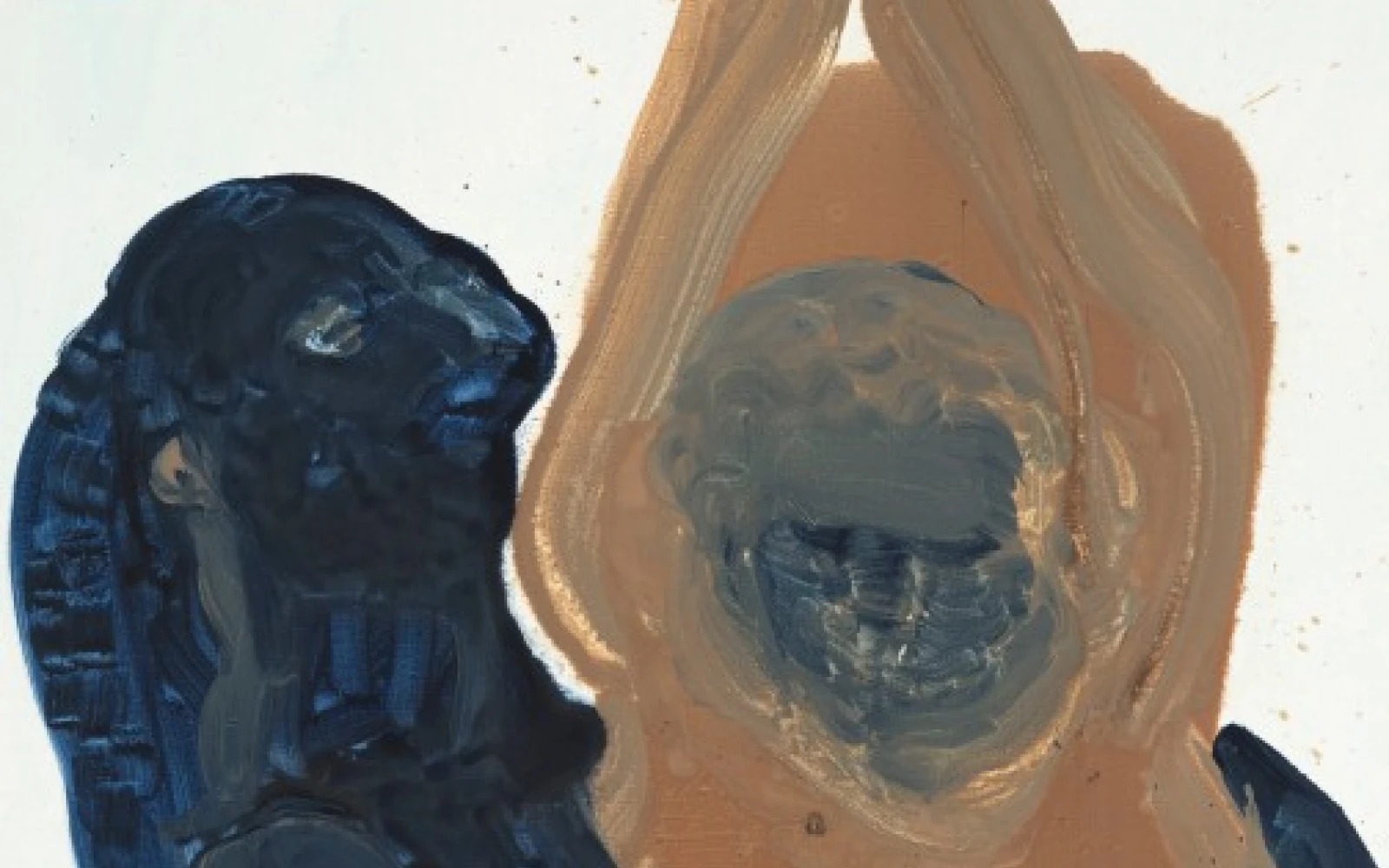London— If you’re looking for an art experience that will leave you feeling like you’ve just gone ten rounds in an emotional boxing ring, then Marlene Dumas’s latest exhibition at Frith Street Gallery, Mourning Marsyas, is the one to see. Running from September 20 to November 16, 2024, this show is a masterclass in how to make big, bold, gut-wrenching art that doesn’t just sit on the walls, but reaches out, grabs you by the collar, and makes you think about all the things you’ve been trying to avoid.

Marlene Dumas is an artist who isn’t afraid to go there, and by “there,” I mean the dark, messy, and often painful places we all know exist but prefer not to dwell on. This new collection is a mix of intention and spontaneity, the kind of work that feels like it’s been brewing in her mind for years, only to explode onto the canvas in a series of fast, furious, yet somehow also deeply reflective actions. It’s not neat, it’s not tidy, and that’s precisely the point.
The central thread of the exhibition is the myth of Marsyas, a satyr who dared to challenge the god Apollo to a musical duel and lost in the most gruesome way possible—by being skinned alive. If that sounds intense, well, it is. But Dumas isn’t interested in just rehashing an old myth; she’s drawing a parallel between Marsyas’s fate and the injustices of our modern world, where power can be just as brutal and unchecked.
The centrepiece, Mourning Marsyas (2024), is a massive painting that practically begs you to get lost in its layers. It started as a simple stain on the canvas—think of it as the art-world equivalent of a wine spill that somehow turns into a masterpiece. From this stain, Dumas has teased out a central figure, flanked by shadowy companions that are both haunting and oddly comforting. It’s like staring into the abyss and finding it staring right back at you.
But that’s not all. Fortune (2024) takes inspiration from Albrecht Dürer and runs with it, presenting three figures that seem to be having a conversation, or maybe an argument—it’s hard to tell because they’re both connected and disconnected at the same time. These figures are part human, part something else entirely, and their strange, almost animalistic forms are as intriguing as they are unsettling.
And then there’s The Widow (2021-2024), a piece that feels deeply personal. Dumas created it over several years, pouring her own grief into the figure of a dark, almost spectral woman. With a skull-like head and a veiled body, this painting is as much about what’s hidden as what’s revealed. It’s like staring into a mirror that only shows you your worst fears and deepest sorrows. Fun, right?
If you’re not already running to the gallery, there’s also Pareidolia (2024), a work that plays with the human tendency to see familiar shapes in random patterns. The face in this piece is bloated, rudimentary, and completely unsettling—exactly what you’d expect from an artist who isn’t interested in making you feel comfortable.
And just when you think you’ve seen it all, Dumas throws in Fate (2000-2024), a small, quietly disturbing painting that took years to complete. It’s inspired by Francisco de Goya’s black paintings, and if that doesn’t give you an idea of the vibe, I don’t know what will. The figure in this piece is skeletal, crouching, and almost insect-like—a stark reminder of the inescapable reality of death.
In Mourning Marsyas, Dumas doesn’t just create art; she creates an experience that demands your full attention. It’s not just about the myth, the history, or even the technique—it’s about the raw, unfiltered emotions that these works evoke. You don’t just look at these paintings; you feel them, deeply, in that part of your chest where all your most intense feelings live. And isn’t that what great art is supposed to do?
So, clear your schedule, book your tickets, and get ready to feel all the feelings. This exhibition is not just a must-see; it’s a must-experience. Trust me, you’ll be talking about it long after you leave the gallery.
Artist bio
Marlene Dumas is an influential contemporary artists of our time, renowned for her emotionally charged and often provocative works that explore the complexities of the human condition. Born in Cape Town, South Africa, in 1953, Dumas studied at the University of Cape Town before moving to the Netherlands, where she has lived and worked since the 1970s. Her art is known for its raw intensity, combining elements of figuration and abstraction to confront themes such as identity, sexuality, race, and mortality. Dumas’s work has been exhibited in major museums and galleries worldwide, and she continues to push the boundaries of painting with her distinctive style and fearless approach to difficult subjects.
